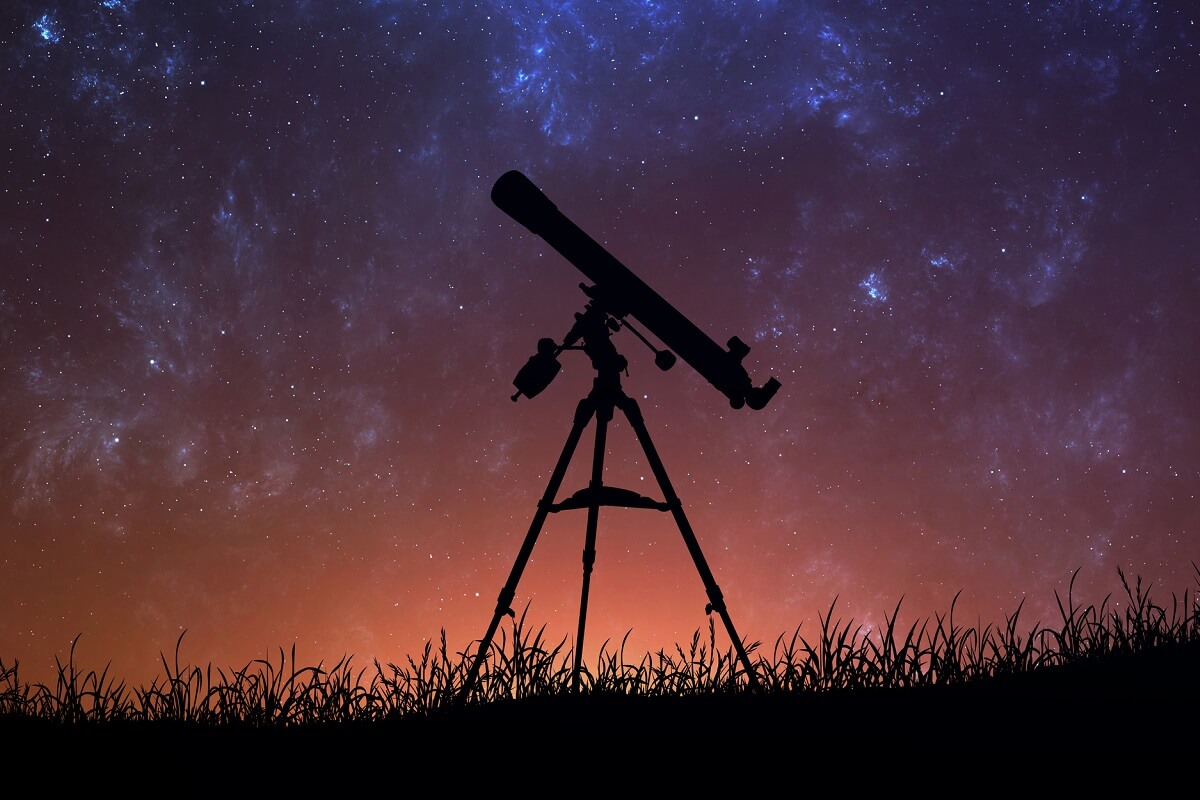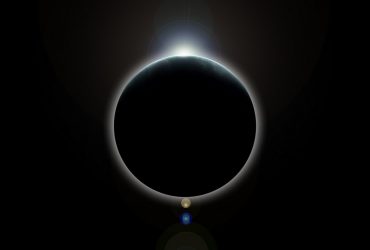What Type Of Telescope Do I Need To See Galaxies?
When it comes to viewing galaxies and other deep sky objects the rule of thumb is to get the biggest aperture telescope you can afford.
Telescope magnification is important for observing galaxies, but it’s not a priority.
In this quick guide, we explain what type of telescope you need to see galaxies, and give you some tips on how to observe different galaxies in the night sky.
What Telescope Magnification Do You Need To See Galaxies?

Magnification is the first thing many amateur astronomers and star gazers think about when buying a telescope.
The magnification of a telescope is important when it comes to observing planets and moons in the solar system.
Higher magnification lets you see more details such as the rings on Saturn or the craters on the moon.
But when it comes to deep sky observations, magnification is not the most crucial factor.
In fact, too much magnification can hamper your observations.
The higher the magnification of your telescope, the dimmer objects get and the harder it is to see details of distant objects like galaxies and star clusters if you don’t have adequate aperture.
What matters most is the aperture of the telescope, which we will talk about shortly.
With a wide enough aperture, you can afford to increase magnification without seriously reducing image quality.
Another reason why magnification is not a priority when picking a telescope for observing galaxies is that there isn’t a specific magnification that’s ideal.
We can’t say that 25x-50x magnification is the best for observing all galaxies.
You’ll find yourself going from as low as 30x magnification to 100x or more depending on the brightness and size of the galaxy.
You may need lower magnification to see an entire galaxy and higher magnification to focus on a specific part of a galaxy, like one of its spiral arms or a nebula within the galaxy.
The best thing about magnification is that it’s easy to change even after you’ve bought the telescope.
You can get a different eyepiece to increase or reduce magnification power. You can also get a barlow lens to get more power out of your existing eyepieces.
In contrast, you cannot change the aperture of a telescope. You only have one chance to get it right until you are able to buy a bigger telescope.
What’s The Best Telescope Aperture For Observing Galaxies?
Get the biggest aperture telescope you can afford. That’s the most important thing to keep in mind.
Galaxies are very far away. Even though they are fairly large (which is why you don’t always need a ton of magnification to see them), they are dim.
So you need a telescope that collects a lot of light. The bigger the aperture of a telescope, the more light it collects, and the brighter and more detailed the galaxy appears.
A 6 inch telescope is the smallest one you can use to see galaxies. It is especially ideal for observing large and bright galaxies like Andromeda and Whirlpool.
However, galaxies will appear faint, shapeless and colourless.
To really enjoy looking at galaxies, we highly recommend getting a minimum 8 inch telescope. If you can, a 10 or 12 inch telescope is even better.
At this aperture range, you can start making out the shapes of different galaxies and seeing details like spiral arms or the bright disk at the centre of the galaxy.
However, don’t expect to see the dramatic colourful galaxies often portrayed in enhanced photos. Our eyes cannot pick up colours from galaxies.
Even large 18 and 20 inch telescopes can only tease out a bit of colour from galaxies. And these are super expensive.
If you can get your hands on an even larger telescope (maybe at a local observatory) you can see more colour but it still can’t match what we get from Hubble and other huge telescopes.
If you want to see galaxies and nebulae in their colours and glory, you’ll need a camera. The long exposure time of a camera will produce those vivid colours.
Which Galaxies Can I See With A Telescope?
You can see dozens to hundreds of galaxies depending on which telescope you are using.
But there are only a few that are really interesting to observe because they are easier to see with an amateur telescope.
These galaxies typically have a low magnitude, meaning they are brighter. The higher the magnitude of a galaxy, the dimmer it is.
Some of the best galaxies to observe with a telescope include:
- Andromeda, the nearest galaxy to our Milky Way galaxy.
- Whirlpool galaxy with its iconic spiral arms.
- Triangulum galaxy, another large spiral galaxy that you can even spot with your naked eyes.
- Sombrero galaxy.
- Pinwheel galaxy.
For the best viewing experience, stick to galaxies that have a magnitude of 10 or less. For other galaxies you can observe with a telescope, refer to the Messier Catalogue.
Tips For Observing Galaxies With A Telescope
Here are our top five tips for observing galaxies with a telescope.
1. Get the right telescope
We’ve already talked about magnification and aperture. As we emphasised, get the biggest telescope you can afford.
We highly recommend a telescope with an equatorial mount. It makes it easy to track objects in the sky. If it’s a computerised (go-to) mount, that’s even better.
By the way, don’t worry whether it’s a refractor or reflector. Large amateur telescopes are almost always reflectors (Newtonian or Dobsonian) because they are cheaper to make.
2. Have several eyepieces
You’ll need to adjust magnification during your observations. Start with a low eyepiece when spotting the galaxy, then switch to a higher power eyepiece to see more detail.
Have two or more eyepieces plus a Barlow lens.
3. Choose a dark location
Light pollution will ruin your galaxy observations, greatly limiting what you can see. Find a place far away from the city to view galaxies.
We recommend a maximum Bortle 6 location (bright suburban sky) but Bortle 4 or lower is ideal.
4. Get your telescope ready
Get your telescope in the best form to observe galaxies. This includes collimating and aligning it. It’ll greatly improve what you can see.
Don’t forget to give yourself plenty of time to get to the location and set up the telescope while there’s still daylight.
5. Try astrophotography
The next logical step once you observe galaxies is photographing them. It lets you see so much more than your eyes can manage.
Get the right camera and some filters and learn the basics of astrophotography. It’ll take a lot of patience and practice, but it’s worth it.
Here’s a video showing some of the galaxies photographed through a 10 inch telescope.



